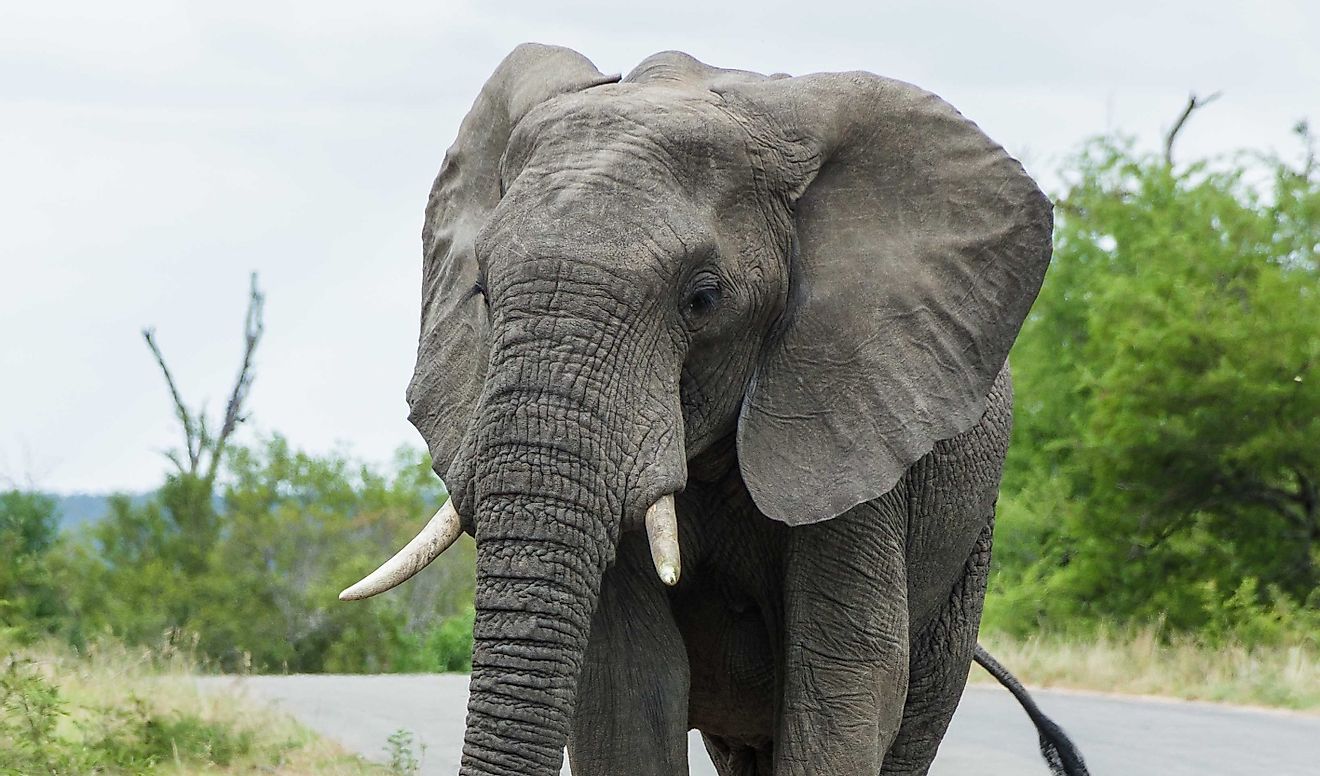African Elephant Facts: Animals of Africa

5. Physical Description
The "bush", or "desert", subspecies of the African elephant is the largest land mammal in the world. Famous for their tusks and long trunks, an African elephant can weigh up to 5.5 tons (5,000 kilograms) and stand up to 13 feet (4 meters) in height. Typically of a darker gray coloration, an African elephant’s skin can be up to 2.5 inches (6 centimeters) in thickness. They have large ears that they will flap to cool themselves off but, arguably, their most unique feature is their trunks, which can weigh up to 300 lbs (135 kg) with a reach of 5 feet (1.5 meters). This feature of the elephant is very strong, and can move loads of up to 600 pounds (270 kilograms), yet is so dexterous that it can pick up a single blade of grass.
4. Diet
Given its large size and plant-based diet, the African elephant needs to eat approximately 5% of its body weight per day, and drinks 30 to 50 gallons of water when it is available, though they are able to survive long periods of drought. As herbivores, and depending on the elephant’s surroundings, they may eat a number of different herbs, roots, bark, fruits, grasses, and tree leaves. Those residing along shorelines and near marshlands may go so far as to eat marine plants despite their often low nutritive values. Elephants are unable to digest over 40% of the calorically poor food they consume, which is why they can spend up to 12 hours a day eating.
3. Habitat and Range
African elephants are found spread out across Africa, but most live in the sub-Saharan regions of the continent. Although they were listed as "Endangered" back in 1996, they are now considered a "Vulnerable" species under the International Union for Conservation of Nature's (IUCN's) more recent Red List of Endangered Species. Major threats to these elephants include loss of habitat, urbanization, and poaching. The ivory and meat trade, though now illegal in many parts of Africa, are still an ongoing issue threatening the animal. More recently, political and militant extremist groups have been poaching African elephants as a means to fund themselves and their operations. Due to habitat restrictions and poor treatments of their kind, African elephants have been known to retaliate by rampaging through human settlements, damaging property along the way and sometimes even ending peoples' lives.
2. Behavior
Female African elephants usually travel in herds that are mostly made up of other females and led by a head matriarch. Groups of elephants are very social, and the individuals within them form very close bonds with one another. The herd is fiercely protective of their young, and all the females in the group will help rear each of their collective offspring until they reach at least four years of age. When they sense predators nearby, a herd will form a circle around their young to shield them from perceived threats. On the other hand, male elephants may travel in groups made up of fellow bachelors, though some will travel alone instead. Something they all have in common is their displays of emotions, including those of grief when coming across the bones of another elephant.
1. Reproduction
African elephants are not monogamous and do not have a specific mating season. In fact, females can give birth all throughout the year. On average, they will only give birth once every four to nine years, and the number of calves birthed is usually one although, occasionally, there may be two born together. The female’s pregnancy lasts 22 months, and it takes the calves 10 to 12 years to fully mature into adults. Older bulls are usually the largest and most dominant, so they do most of the mating, while the younger ones continue to roam and seek a mate of their own. Bulls may join the group for a few weeks before moving on to find new mates.











